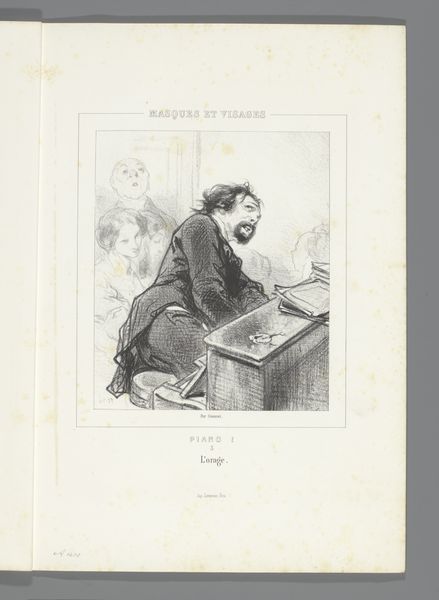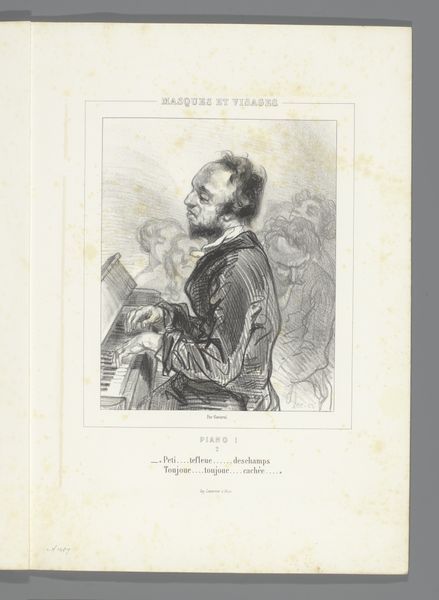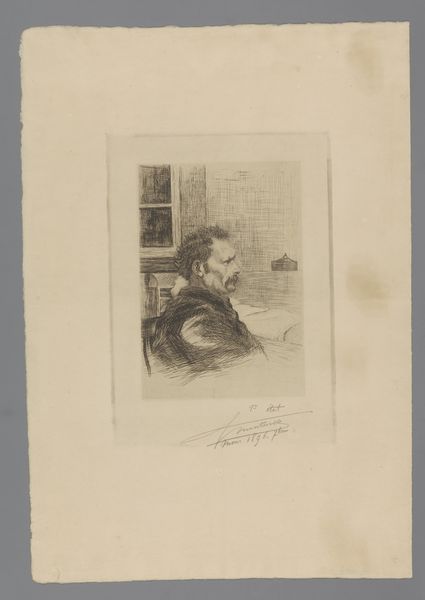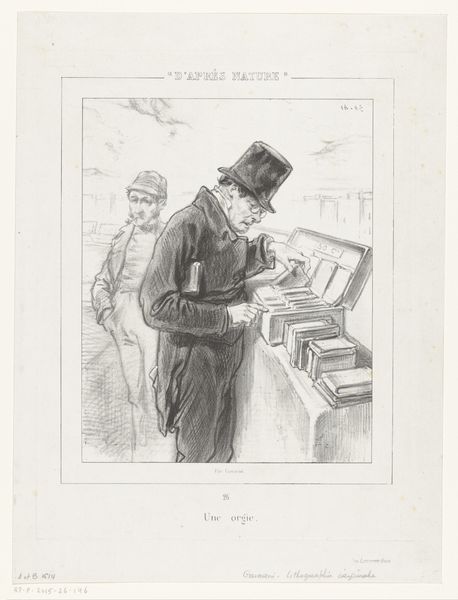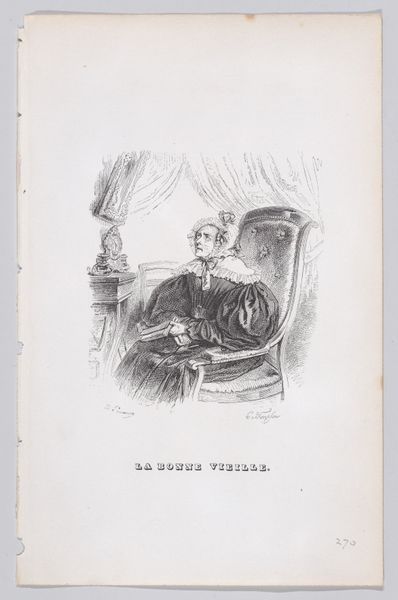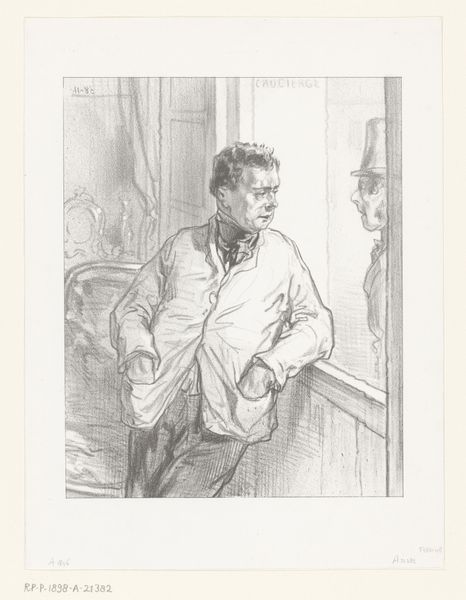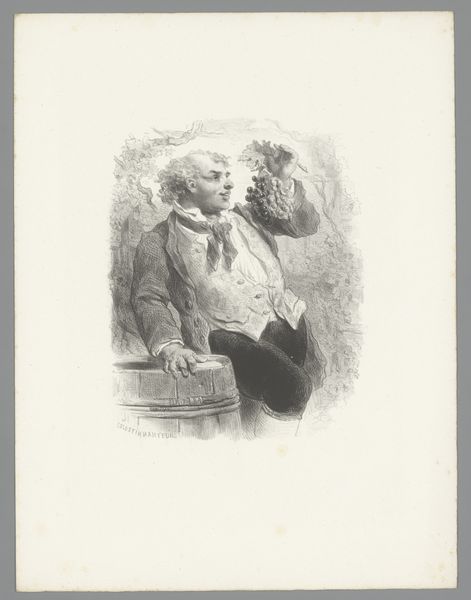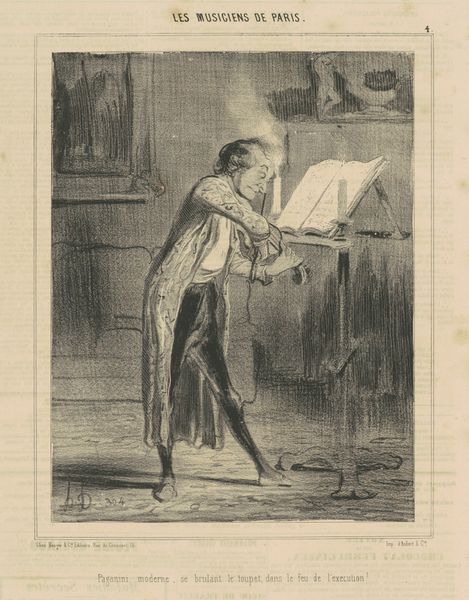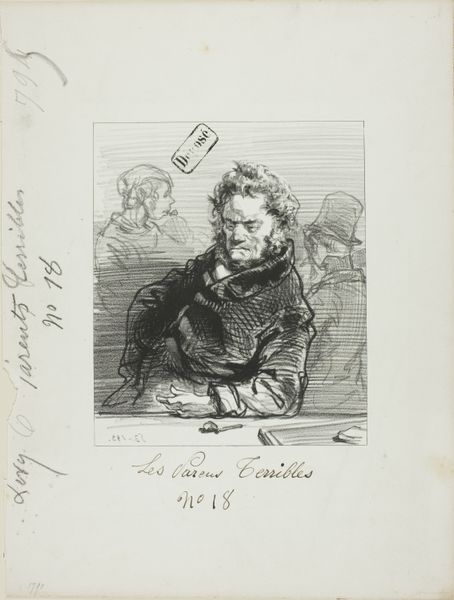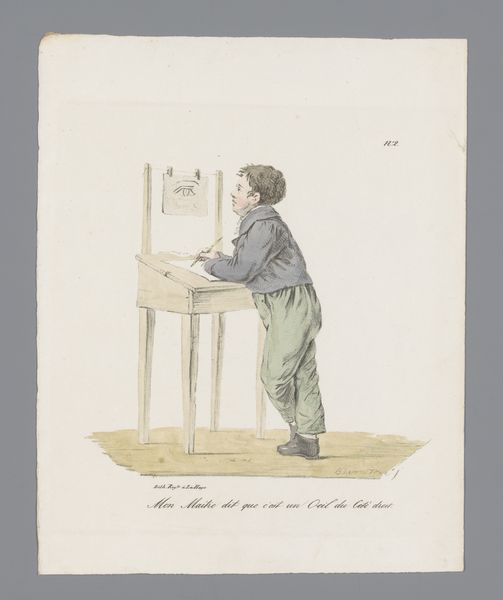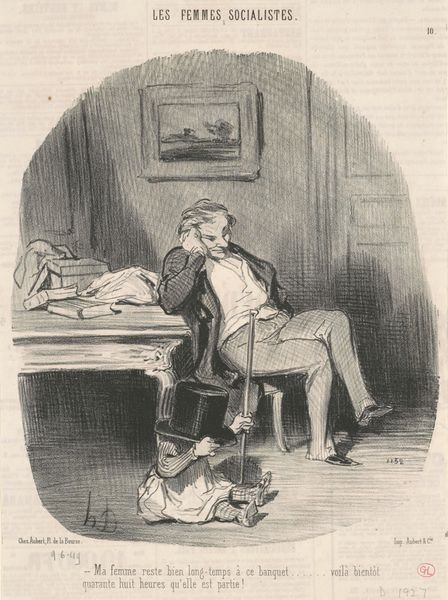
Dimensions: height 378 mm, width 275 mm
Copyright: Rijks Museum: Open Domain
Editor: So, this is Paul Gavarni’s "Pianist," a pen drawing from 1853. It’s currently held at the Rijksmuseum. It feels rather… intimate, doesn’t it? The lone figure hunched over the piano. What do you see in this piece, looking at it from a symbolic point of view? Curator: It speaks of the hidden languages within us all. The pianist here, seemingly lost in his own world, evokes a powerful cultural memory: music as solace, as escape. Notice how Gavarni has positioned him: almost as if he's barricaded himself behind the instrument. Editor: That's interesting. I hadn't thought about it that way, I was too caught up in the man's introspective look. Curator: And that’s precisely the trick! The instrument is both a source of joy *and* a barrier, it highlights how creative expression can simultaneously connect and isolate us. The draped curtain behind him could also be seen as the theatre, perhaps symbolising that there is an element of performance in all that he does? Is this individual, alone with his instrument, actually seeking to connect with a wider audience? Or is he just looking inwards, in an act of self-analysis? Editor: Wow, so it’s almost like the drawing contains these opposing ideas within itself. Curator: Exactly! Romanticism thrived on these tensions, internal struggles made visible, expressed by an individual but representing something that is universal, shared between us all, in a language we call all access if we dare to look within ourselves. Editor: I see! Looking at it this way, the drawing becomes a meditation on art, loneliness, and expression. Thanks! Curator: My pleasure. This image reminds us that even seemingly simple depictions of everyday life are fertile grounds for exploring profound truths about ourselves, if you just know where to look for it.
Comments
No comments
Be the first to comment and join the conversation on the ultimate creative platform.
